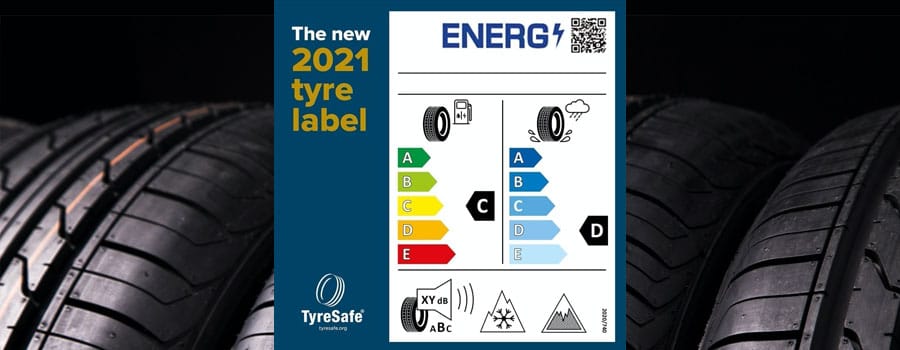New labelling system makes choosing the right tyre simple

There is one thing every car has in common. No matter what you drive, the only thing keeping you in contact with the road are four A4 size patches of rubber.
Your tyres are the only thing keeping you on the road, yet it's estimated that just 1% of tyres on sale have the highest rating for both efficiency and wet grip. So it's probably about time the tyre labelling system is getting an overhaul.
The labels themselves aren't new, but it was rare to see them as most people choose tyres by budget rather than rating. By the time the tyres are on your car the fitters have already removed the labels. Under new rules that came into force on 01 May, not only have the labels been simplified, but they're also being made available digitally, so customers have easy access, while retailers are obliged to provide the information to every customer.
So what's new with the latest tyre labels?
The new labels have the same basic information as the old ones and look very similar to the kind of energy label you find attached to electrical appliances. Each area is given its own rating with the label highlighting fuel economy, performance in the wet, and tyre noise. There are also new symbols denoting tyres suitable for snow and ice.
Stuart Jackson,
TyreSafe
Chair, points out: “The key point of tyre labelling is to help those choosing a tyre to make an informed decision. There is concern that owners typically only consider cost and don't appreciate there may be tyres that are more suitable and offer better value but perhaps at a higher price. It's in the interest of vehicle owners to make themselves aware of the information contained on the new tyre label to cut costs in fuel, as well as improve their safety.”
It's also worth bearing in mind what kind of driving you do and what car you drive when it comes to deciding on tyres. The new labelling system should help to highlight the differences. The perceived wisdom is that the safest thing to do is to have two sets of tyres for your car: summer tyres for summer and winter tyres for…well winter. It's a sensible approach, but you can save a chunk of money and the hassle of changing wheels if you opt for all-season tyres.
All-season tyres offer consistent traction whatever the weather conditions and eliminate the requirement to swap to winter tyres. It's also slightly safer given the fact the UK summer is likely to involve lots of rain and summer tyres don't cope as well with water as the all-season ones. All-season tyres are available from all the major manufacturers and inevitably do cost a little more than the budget ranges, but a better-quality tyre that will be safer and more long lasting might actually be a cheaper option.
Whether or not you drive an EV can impact correct tyre choice too. Tyres built specifically for battery-powered vehicles do vary by manufacturer, but many have a special structure to support the additional weight of the batteries. The correct tyre choice for an EV is not only safer but should also provide similar wear rates as a regular car gets from regular tyres, despite the extra battery weight and the instant acceleration.
Tyres for electric vehicles will generally have better-rolling resistance, maximising the distance the car can travel between charges. The lack of engine noise to mask the rumble of tyres also means these tyres will have a better noise (dB) rating so less road noise can be heard inside the cabin as a result.
So next time you need to replace your tyres make sure you read the label first.
View our latest blog posts

Categories
Pages
We are a family run business based in rural Worcestershire. Our team of 38 staff are on hand to provide an exceptional service to personal and business customers.
Read More
